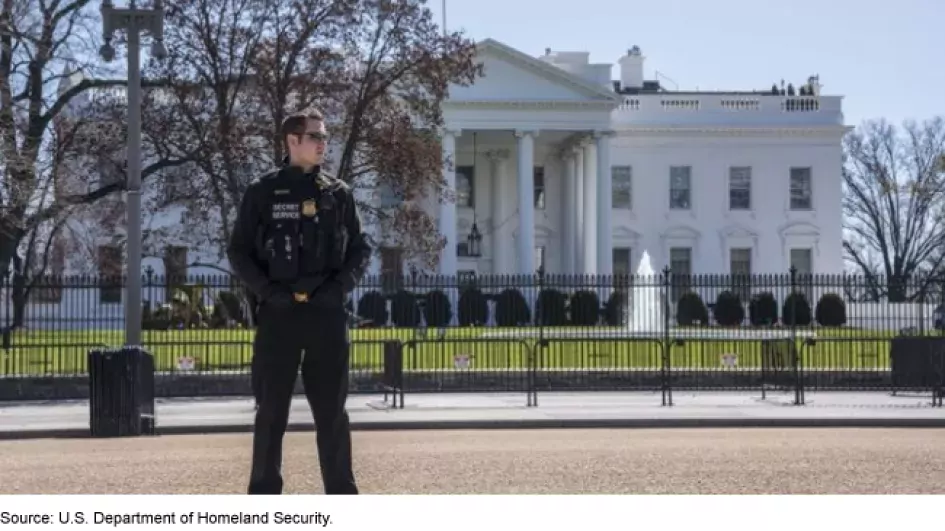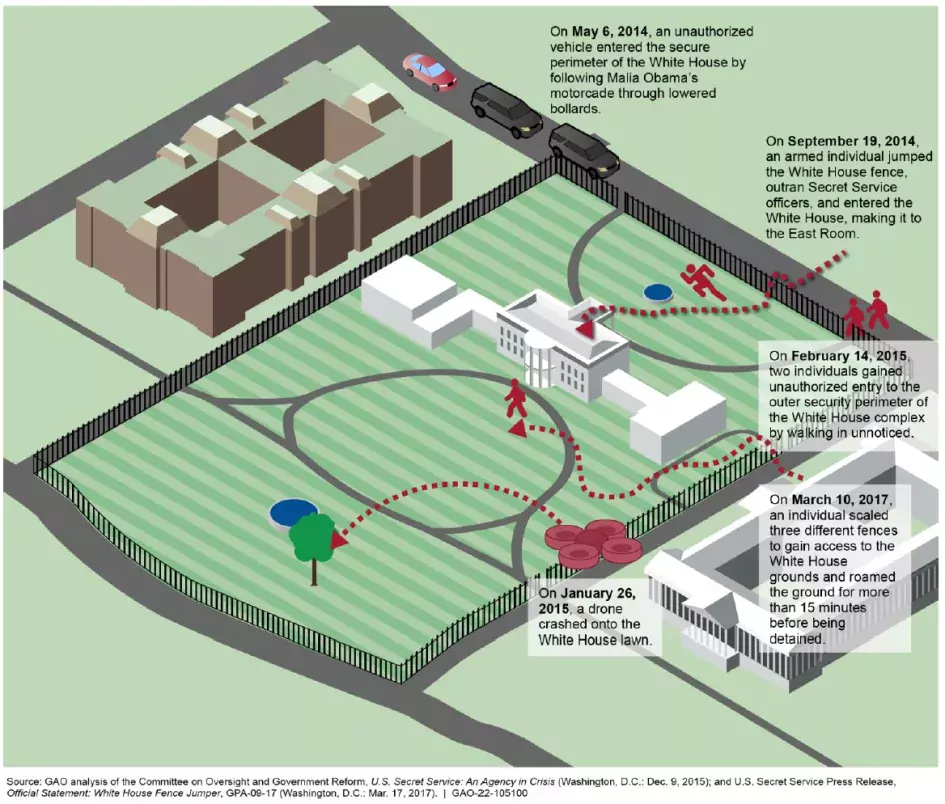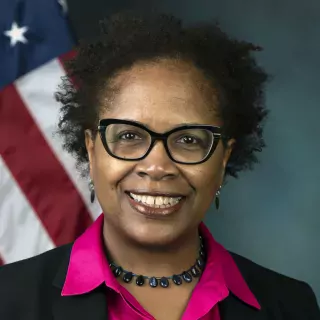For Presidents’ Day, We Look at the Men and Women Who Protect the Commander in Chief
Secret Service agents’ watchful presence are a quintessential part of any president’s life. The Secret Service has protected every President of the United States after William McKinley was assassinated in 1901. But past security incidents have highlighted the challenges the Secret Service faces in carrying out its mission.
In honor of Presidents’ Day on Monday, today’s WatchBlog post looks at our new report on past security incidents and the steps taken in response.
Uniformed Division Officer Guarding the White House
Image

Past security incidents at the White House
Most people probably know that Secret Service agents protect the president. But fewer may know that other Secret Service personnel also protect our leaders. For example, Uniformed Division officers—not special agents—are primarily responsible for protecting the White House complex, which includes the White House, the Eisenhower Executive Office Building (where the vice president and executive staff work), and the Blair House (the president’s guest house).
Several security incidents occurred on the White House complex from 2012 through 2017. In a prominent example, on September 19, 2014, an intruder jumped over the White House’s north fence, passed several layers of security, evaded U.S. Secret Service personnel, and entered the White House. Fortunately, President Obama and his family were away at this time.
Selected Incidents on the White House Complex, 2014 - 2017
Image

The response to security breaches at the White House
As a result of the September 19, 2014 security breach, the Secretary of Homeland Security—who is the head of the department that includes the Secret Service—established an independent panel of experts to review White House security and other aspects of Secret Service operations. The panel found that the breaches were, in part, caused by a “catastrophic failure of training, and that training levels were at all-time lows.” The panel made 19 recommendations related to training and personnel, technology and operations, and leadership.
We were asked to look into the Secret Services' progress toward implementing those 19 recommendations. In two reports—the most recent of which was released January 26—we found that the Secret Service had implemented 13 of these recommendations and taken steps toward implementing the remaining six.
Notably, the Secret Service has implemented integrated training (i.e., drills and exercises) to ensure all White House teams know their roles in responding to threats, incorporated mission-based budgeting principles in its budget formulation process, and established a leadership development system.
However, our analysis of Secret Service data shows that Presidential (PPD) and Vice-Presidential Protective Divisions (VPD) special agents’ training hours have not significantly increased since the 2014 security breach. Further, between fiscal years 2017 and 2020, the agency fell short of its planned staffing levels by 190 special agents and 85 Uniformed Division officers, which adversely affects how much time existing agents and officers have to train. Secret Service officials attribute this shortfall to a number of challenges, such as a tough recruiting environment in fiscal year 2020 thanks in part to the COVID-19 pandemic. However, future shortfalls in meeting its planned staffing levels could negatively affect the Secret Service’s ability to meet its new training target set in August 2021 to have agents train for at least 12% of their work hours by fiscal year 2025.
In 2019, we reported that PPD and VPD agents had not met recommended training levels and the agency had no plan for how agents would do so. We recommended the Secret Service develop and implement such a plan, and it concurred. However, the agency has not yet identified how PPD or VPD special agents will meet the agency’s 12% training target, or established interim achievable training targets, given current staffing levels.
By implementing our 2019 recommendations, the Secret Service would be better positioned to ensure that agents assigned to protect the president and vice president are prepared to carry out their duties.
- Comments on GAO’s WatchBlog? Contact blog@gao.gov.
Note: This blog post was updated to clarify that security incidents occurred several years ago.
GAO Contacts
Related Products

GAO's mission is to provide Congress with fact-based, nonpartisan information that can help improve federal government performance and ensure accountability for the benefit of the American people. GAO launched its WatchBlog in January, 2014, as part of its continuing effort to reach its audiences—Congress and the American people—where they are currently looking for information.
The blog format allows GAO to provide a little more context about its work than it can offer on its other social media platforms. Posts will tie GAO work to current events and the news; show how GAO’s work is affecting agencies or legislation; highlight reports, testimonies, and issue areas where GAO does work; and provide information about GAO itself, among other things.
Please send any feedback on GAO's WatchBlog to blog@gao.gov.

